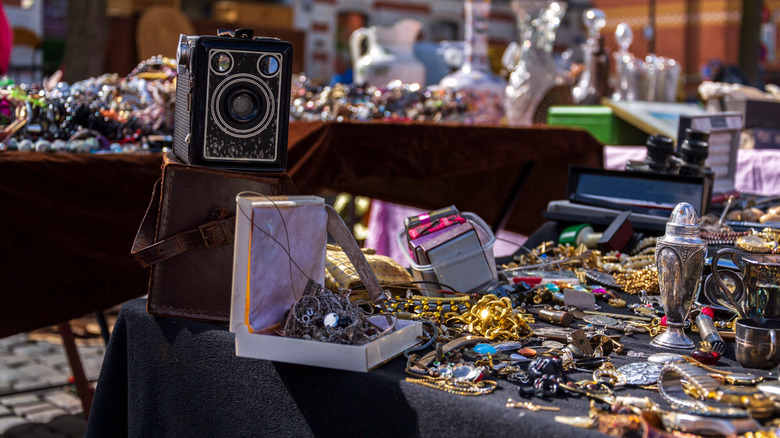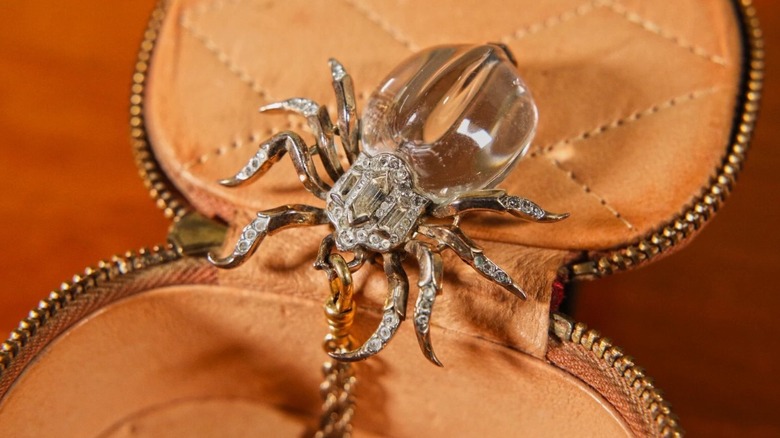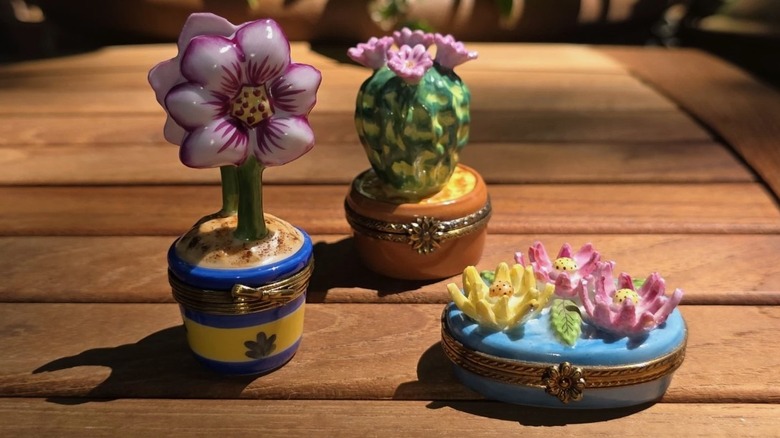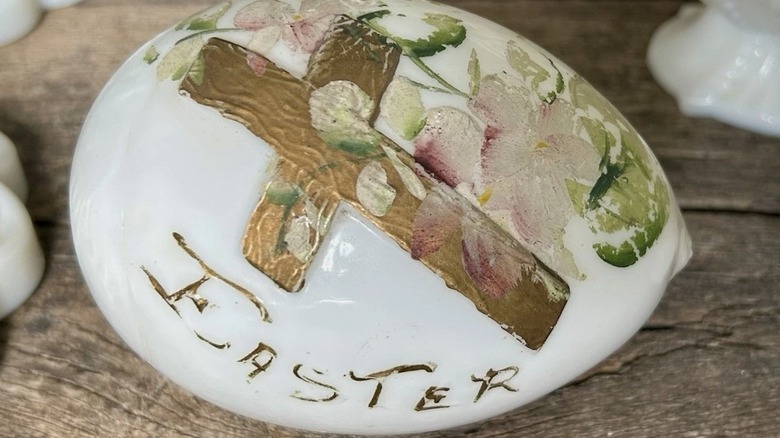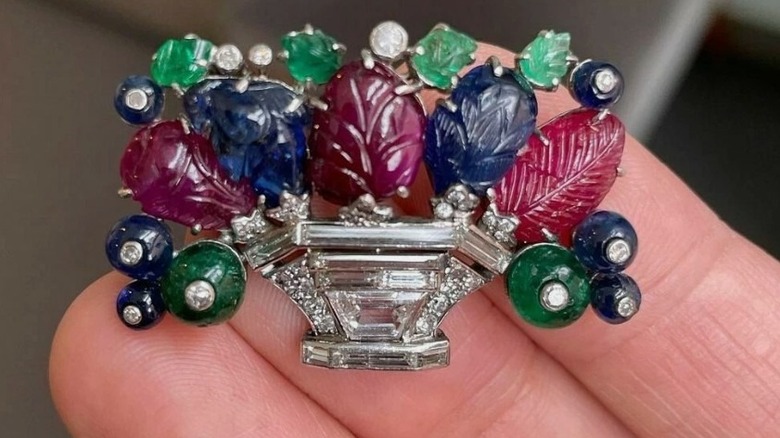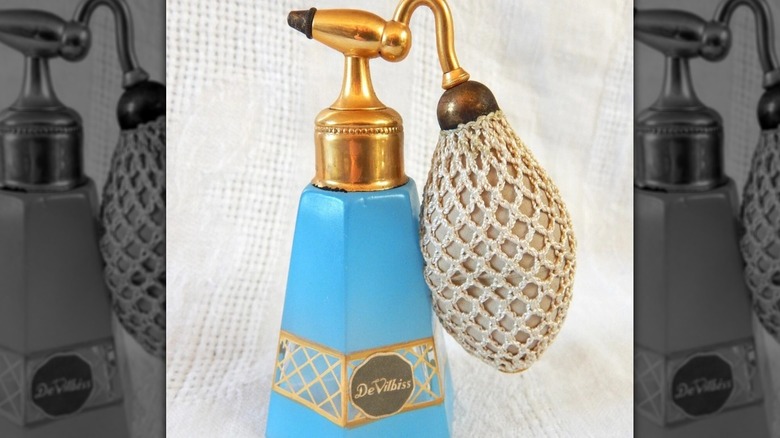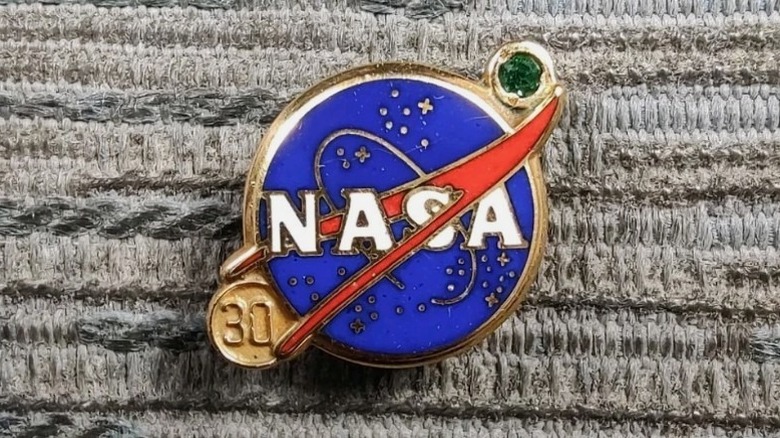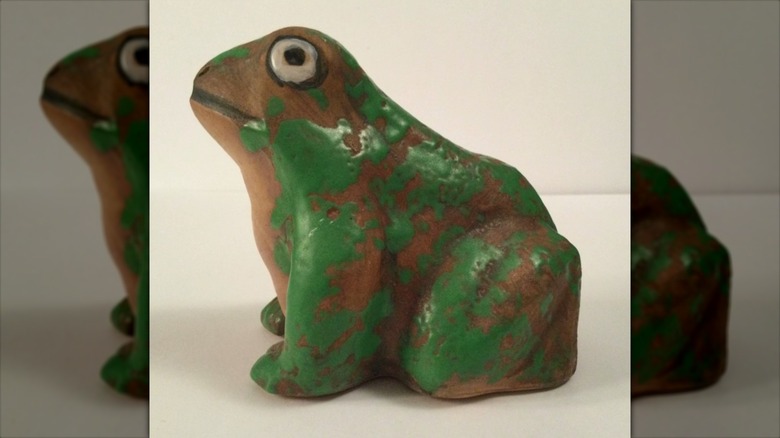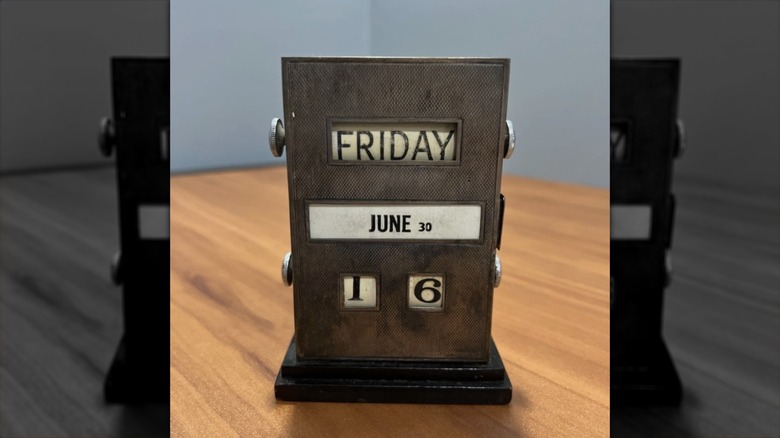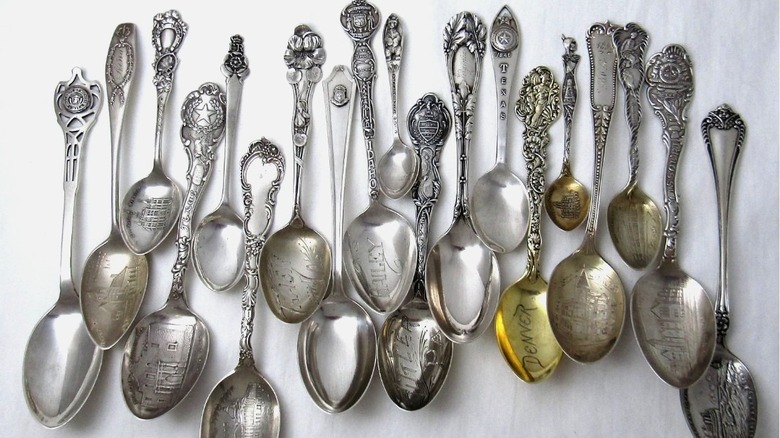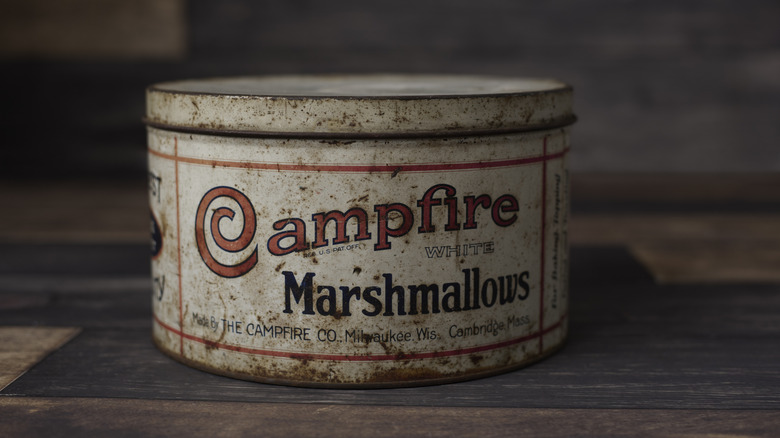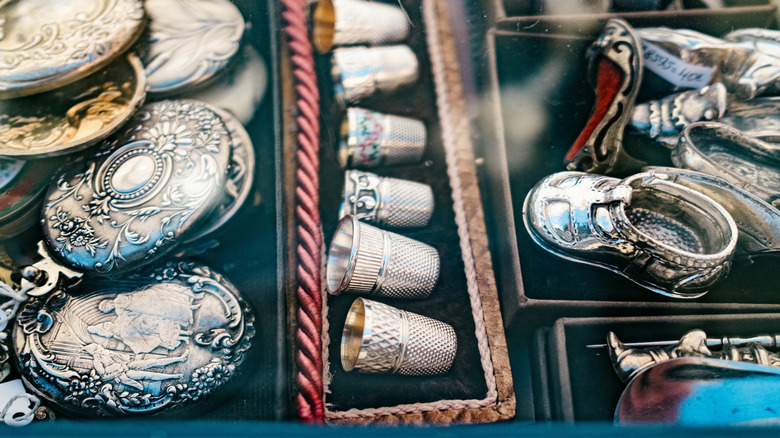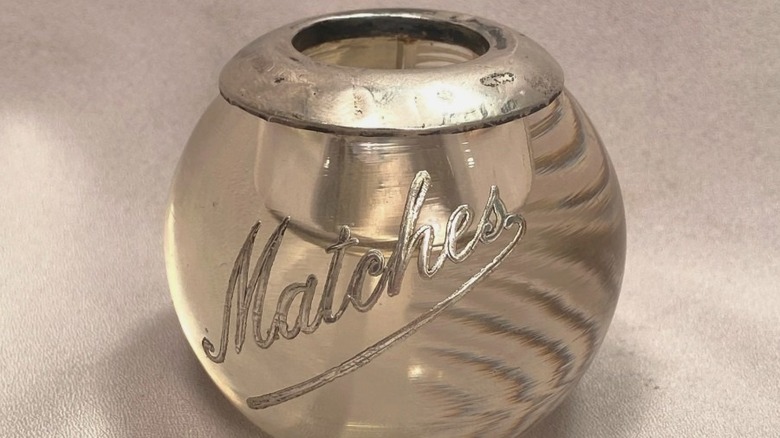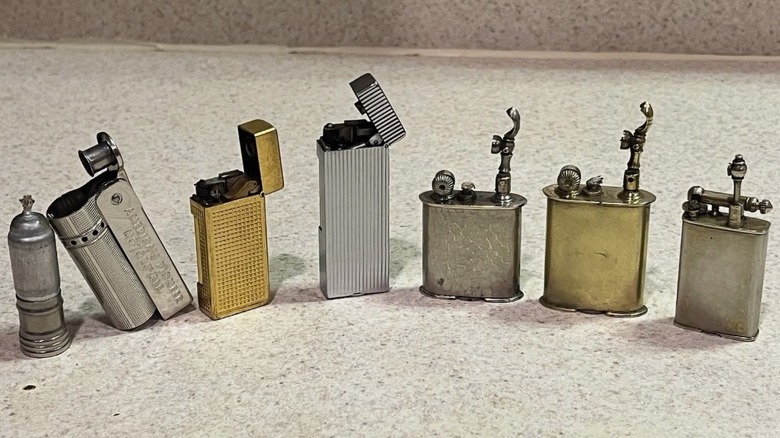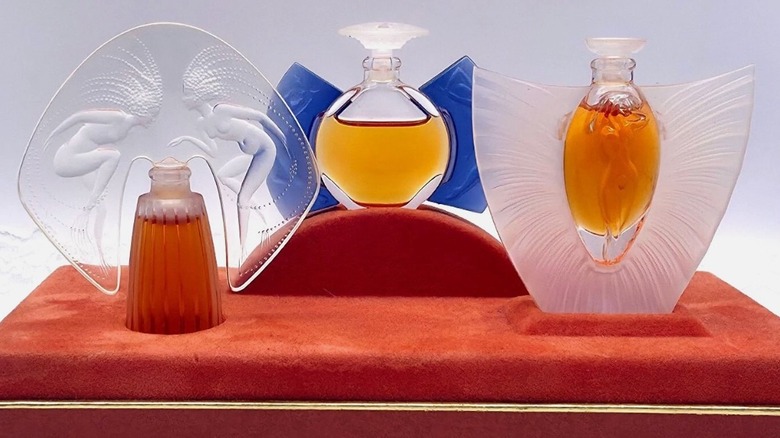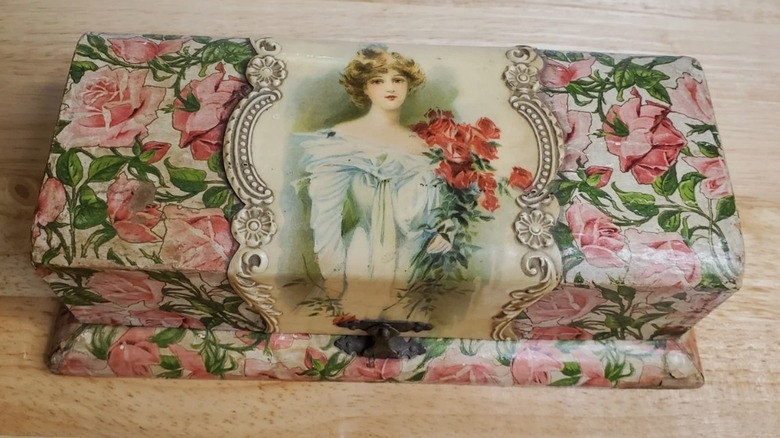15 Valuable Vintage Trinkets You Should Always Look For At Thrift Stores & Estate Sales
We may receive a commission on purchases made from links.
There's nothing quite like spending a crisp fall afternoon out thrifting. And if you love vintage collectibles or trinkets, you probably know there are a lot of interesting things worth getting at the thrift store, like vintage powder jars, interesting jewelry, enamel pins, or even figurines. And any good thrifter knows that some of these treasures can be extremely valuable finds. You just have to know what to look for.
Throughout history, humans have created and collected trinkets, whether for sentimental reasons or monetary value. There are even groups on social media dedicated to gathering people together to share their love of certain collectables. Some people like odd-shaped vintage glass jars, some collect vintage souvenir spoons, and some people even enjoy antique thimble collecting. Whatever your chosen fascination, you can be sure treasures are out there to be found. And after you've found your favorite trinket, you'll only need to figure out a way to display it without cluttering your home.
Jelly Belly brooches
Costume jewelry was extremely popular at the time these unique pieces started being produced in the 1930s and '40s. Trifari is credited with designing these animal- or insect-shaped brooches first, with Coro following later. These trinkets were called "clear belly" by early creators because each animal subject was centered around a rounded piece of clear Lucite. Later on, collectors coined the term "Jelly Belly", and it stuck. Some of these unique animal/insect-shaped brooches can sell for thousands of dollars.
Limoges boxes
Limoges boxes are hand-painted porcelain hinged boxes that are manufactured in Limoges, France. They have been around since the late 18th century, originally created to hold snuff. Although manufactured by multiple artisans, all true Limoges boxes are made with porcelain specifically from this region of France. They vary greatly in their hand-painted designs and adornments and are extremely collectible. Depending on their age, design, and quality, they can be quite valuable.
Hand-blown milk glass Easter eggs
Hand-blown milk glass Easter eggs first popped up in America during the Victorian era. At the time, it was a common tradition to give collectible eggs as gifts during Easter. These unique creations were not mass-produced, and that fact adds to their collectability. Each one is made of hand-blown glass and hand-painted. They aren't extremely valuable, but some designs can sell for a decent amount of money online.
Vintage fruit salad jewelry
The first name this type of colorful jewelry went by was "Tutti Frutti," originating with Jacques Cartier in the 1920s, who was inspired by his trips to India. At the time, it was common for Indian artisans to carve gemstones into interesting shapes. Using this type of design, Cartier created jewelry pieces with gemstones in the shapes of leaves, fruit, and flowers. Later, other manufacturers copied the method for costume jewelry, but at a much reasonable price, and theirs was called "Fruit salad". If you're lucky, you might find some of these treasures at an estate sale.
DeVilbiss perfume atomizer
Dr. Adam De Vilbiss originally invented the atomizer in 1887 for use in his medical practice to administer medication. After a while, his son convinced him his invention could be sold as a perfume applicator. Over a period of several years, they created even more elaborate glass bottles for the atomizers that became extremely popular with the public. Today, depending on the style and quality, many of these bottles can sell for great prices and also make beautiful collectible trinkets.
Vintage enamel employee NASA pin
These pins are extremely collectible due to their historical significance. NASA awarded these pins for years of service achieved by its personnel. They were designed with NASA's original logo, the "meatball." After 1975, this logo was replaced by what is known as the "worm" logo (the word NASA in branded font). In 1992, the "worm" was retired, and the original "meatball" design was brought back. Then, once again, in 2020, the "worm" logo was brought back. Even if NASA can't make up its mind, no matter the age of the personnel pin you find, it is a valuable piece of American history.
Weller ceramic animal figurines
Samuel Augustus Weller was a late 19th-century potter from Ohio. He had many artists who worked with him over the years. Notably, Charles Upjohn joined his studio and added many interesting designs to Weller's shop. One of the popular lines created in the studio while Weller worked with Upjohn included woodland creatures. So, if you happen to come across one of these adorable trinkets, check its bottom for the Weller signature. These collectables can be extremely valuable.
Vintage perpetual calendars
Perpetual desk calendars have been around for a very long time. Some of the more valuable collectible ones originate from the mid-century, when they saw a surge in popularity. In the 1950s, these types of calendars made wonderful gifts — today, they also make wonderful collectibles. Not only are they an interesting trinket to display, but they are also functional. Depending on its age, material, and quality, a mid-century perpetual calendar can be a valuable find.
Sterling silver souvenir spoons
Sterling silver souvenir spoons first appeared in the U.S. as a way to commemorate the 100th anniversary of the presidency of George Washington in 1889. They have been a popular collectible ever since. Valuable not just because of the precious metal they are made of, but also because of what each one represents. They can be a record of a vacation in another state, a special event, or even historical figures. Always keep an eye out for these on your thrifting adventures.
Vintage decorative tins with advertising graphics
Vintage tins with advertising and branding from early America are valuable collectibles not just for their age, but also for the peek into history. Companies featured interesting logos and catch phrases that, today, can stir up nostalgia for those who love old things. Not to mention, the tins from the early 20th and the 19th centuries were built to last. Depending on the condition, product, and company, these tins can sell for hundreds of dollars.
Vintage thimbles
Thimble collecting has seen a rise in popularity lately. It could be because of their novelty — not many people know what a thimble is used for these days. Part of everyday life and more common years ago, these little trinkets give a peek into times when people had to hand-sew everything. Plus, they come in so many interesting patterns, designs, and materials, making them perfectly suited for collecting. Depending on the age, you might find yourself a valuable collectible in your grandma's sewing box or at a thrift store.
Antique match strikers
Back when it was more socially acceptable to smoke, many people had interesting ways to store their cigarettes and matches. Some match holders were extremely creative in their function and design, including not only a place to hold your matches but also a way to strike them. Many manufacturers designed their holders to not only accent a home's decor but maybe even become a conversation starter on its own. Some were gilded in precious metal or made of crystal. There's no doubt that many vintage match holders have become valuable collectibles.
Antique lighters
Speaking of when it was socially acceptable to smoke, lighters were everywhere before the 1990s and were designed in many endless ways over the years. Antique lighters are practically a demonstration in engineering creativity. Many antique lighters derive their value from their age, the creativity of the mechanism, and the material they are made from. Even luxury designers, like Cartier and Chanel, created lines of lighters. It's definitely worth snatching up that vintage lighter at the estate sale to add to your collection.
Lalique art glass perfume bottles
René Lalique began his career in France as a jeweler and later a glass artisan. In 1907, he joined forces with perfumer François Coty and designed beautiful glass bottles for Coty's perfumes. He designed many beautiful glass art pieces in his time, and in 1992, his company even created its own perfume. These beautiful bottles aren't just containers; they are works of art — valuable not only for their quality but also for their history. Many of these bottles are quite invaluable to this day and would make beautiful pieces to display.
Celluloid vanity boxes
Celluloid vanity boxes are some of the earliest examples of the beginning of the plastics industry. Coming into popularity in the late 19th and early 20th centuries, celluloid was being used for everyday items. Many of these boxes are decorated with Gibson girls, flowers, and other popular designs of the time. Not only were these boxes beautiful to look at, but they were also a convenient way to store grooming tools. If you find one of these boxes in good condition, it can be quite valuable.
